Breastfeeding is natural, but it does not just come naturally to new moms. It takes a lot of learning, a lot of commitment, and a whole lot of practice. This guide will take you through all the things you need to know to about breastfeeding to do it successfully.
Of all the responsibilities that come with a newborn, breastfeeding is arguably one of the most challenging. when you look at other moms doing it, it seems so easy, so natural… until you have to do it yourself.
Breastfeeding is natural, but it does not just come naturally to new moms. It takes a lot of learning, a lot of commitment, and a whole lot of practice. The best thing about it, it is very fulfilling. This breastfeeding guide will give you all the breastfeeding tips and hacks that you really need to know as a new mom in order to breastfeed without stress.
Some links on this page are affiliate links which means that I may receive a small commission, at no extra cost to you, if you make a purchase using these links. As an Amazon Associate, I earn from qualifying purchases.
My experience as a first-time mother was not easy, I had a rough time learning to breastfeed my son. I couldn’t get the latch right, I wasn’t producing milk on the first day so the baby was hungry and I had no idea what to do. I also did not get so much support from the nurses and I was not in touch with a lactation counselor.
If I learned one lesson from that experience it was that when it comes to breastfeeding, information is power.
I committed to learning as much as I could about breastfeeding so that the second time around, I could get it right. And I did.
Read more breastfeeding posts:
- Your burning breastfeeding questions answered by a lactation consultant
- How to increase your breast milk supply fast
- 8 breastfeeding essentials every mom should have
- 4 reasons to start pumping
When my baby girl was born last year, it was a very different experience from my first. In fact it was very empowering because I knew what to ask for.
I had the support of the nurses who helped latch the baby as soon as she was born. And in the subsequent weeks, I had the support of multiple lactation consultants both for physical visits and phone consultations.
Was it flawless? No. I had challenges, at some point, I suffered from sore nipples and I also had oversupply issues. the difference was that this time, I knew exactly what to do, even if that meant scheduling a visit with a lactation expert.
This guide will take you through all the things you need to know to breastfeed your little one successfully. No matter what your question is, I got you mama.
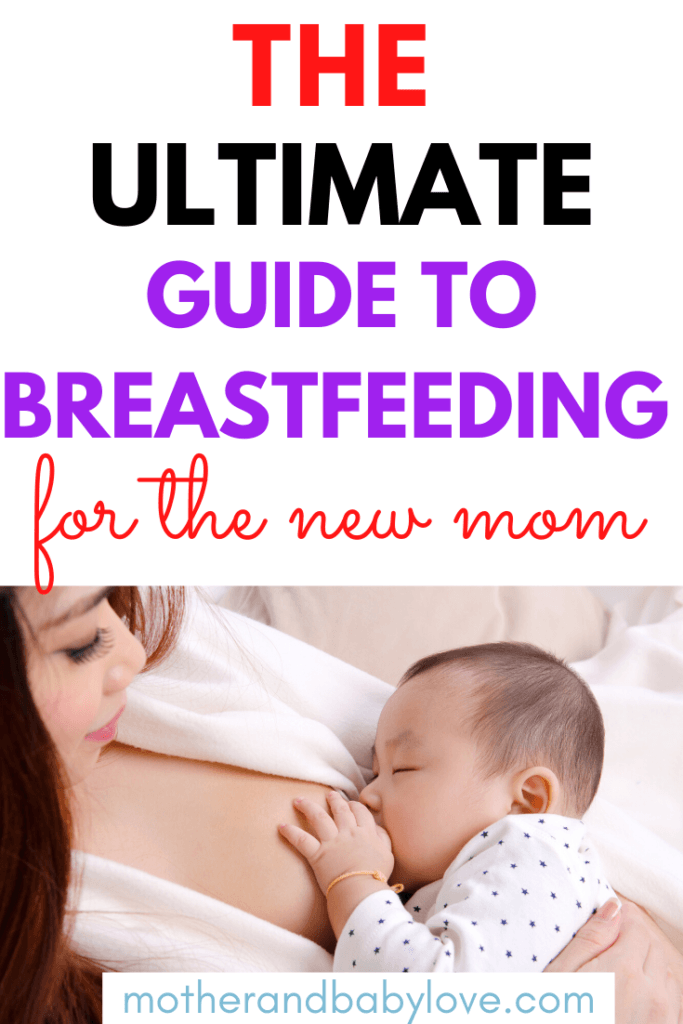
Also read: The Most frequently asked breastfeeding questions answered by a certified lactation counselor
Use the table of contents to navigate through the post.
Breastfeeding Overview

There is no doubt that breast milk is the best food for an infant. This is not to say that the mom who cannot breastfeed her baby for some reason is wrong, but breast milk is custom-made for your baby.
There are so numerous advantages that come with breastfeeding that will make you prefer it over formula. In fact, breastfeeding is not only beneficial to the baby, it is is beneficial for you too.
Learn just how powerful breastfeeding is here.
One thing that you probably don’t know is that breast milk changes according to your baby’s needs. It contains immunity-boosting substances that will help the baby fight illnesses.
Your body produces breast milk that contains the right antibodies to fight off the pathogens in the baby’s immediate surroundings. That means if let’s say someone in your house has a cold, the best protection for your infant against this illness is breastfeeding them.
If you pump your breast milk over time you will begin to notice how it changes even in appearance.
What Does Breast Milk Look Like?

Breast milk does not always look the same. It can change color even from one feeding to another. Sometimes taking the color of something you have eaten or drank.
Typically, the color of breast milk can be yellow, clear, white, or even blue-tinged depending on the stage.
There are three major stages that breast milk will undergo
- Colostrum
- Transitional Milk
- Mature Milk
Colostrum
Colostrum is produced starting in late pregnancy for some moms and for a few days after the baby is born.
It is generally thicker than the milk that will be produced later and it is yellow or orange in color due to high levels of beta-carotene.
In terms of quantity, not very much colostrum is produced. However, it is very nutritious and contains the antibodies that provide your baby with passive immunity. You could view it like your baby’s first immunization. All-natural from mama 🙂
Transitional Milk
Transitional milk kicks in after colostrum and lasts for about 2 weeks. The color starts changing from yellow to white. At this point, milk production increases and it is also lighter than colostrum. Don’t be fooled by how light it looks, it actually contains more calories. Perfect for your growing baby.
Mature Milk
Mature milk is the last stage of milk that is produced after about 2 weeks. It is 90% water and it changes color depending on how much fat content it has.
Mature milk comes in two types:
- Fore milk – It is the milk produced at the beginning of a breastfeeding or pumping session. It looks clear or bluish because of the low fat content. It contains water, proteins and vitamins.
- Hind Milk – The hind milk is produced towards the end of the breastfeeding or pumping session. It is thicker than fore milk and contains more fat content. It looks creamy white or yellowish.
When you store breast milk in the refrigerator sometimes it will separate and form a layer of fat on top. This is completely normal. Sometimes it might even look lumpy but that does not mean that it is spoiled.
You will know spoiled breast milk from a very distinct sour smell and soapy taste. This article addresses different milk issues and how to deal with them
Common Misconceptions About Breastfeeding

1. Breastfeeding is ALWAYS Painful
Okay, here is the thing, breastfeeding should not be painful. However, for some moms, it can be painful and uncomfortable in the first few days when the milk comes in and the baby may not be latching properly. There are other common breastfeeding issues that may result in pain but this should not be treated as normal. If you are in pain you need to talk to a lactation specialist.
Working with an experienced Certified Lactation Consultant/ Counselor will help you manage the challenges you face during these initial days. They can guide you on how to establish a good latch from the beginning and help you avoid dealing with pain and other common breastfeeding problems.
Some mothers don’t experience any pain at all so don’t be discouraged.
According to Kellymom, the typical pain peaks around the third day and is usually gone by the second week. This is also consistent with my personal experience. Day 3 to 5 were the toughest days of breastfeeding for me but by the second week, breastfeeding was a breeze.
What is typical?
- Mild pain/ discomfort when the baby is latching on that does not last more than 30 seconds into the feeding.
- Pain peaks around the third day and is gone by 2 weeks
- There should be no skin damage such as blisters, cracks or bleeding.
- Your nipple should not be flattened, pinched or creased after a feeding. It should look the same.
When you should seek help:
Get in touch with a lactation specialist in case of the following:
- Pain throughout the feeding
- Intensely painful breastfeeding
- Pain that lasts beyond the first few weeks of breastfeeding
- Skin damage from cracks, blisters, or bleeding.
2. Breastfeeding is too much work
Once you get the hang of it, which will take you about a week or so with the help of your lactation counselor, breastfeeding is easy-peasy. You can do it in your sleep, literally :).
No waking up to the kitchen to warm a bottle in the middle of the night.
When going out with the baby you don’t have to pack formula or figure out how to mix it and all that.
Just whoop out your breast and baby’s food is ready. It really doesn’t get easier than that.
Personally, the main reason I exclusively breastfeed is because it is the easiest thing ever. I hate cleaning bottles and mixing formula and I never have to think about baby’s food because I am the food 😀
She is almost ready for weaning now and I am not looking forward to it.
3. Breastfeeding will ruin your breasts
Well, nursing does not really change your breasts, pregnancy does. And you’ve been through that already so just hang in there.
When you are nursing/breastfeeding your breasts may get a stretched-out look but other factors can also cause sagging like aging, weight gain due to pregnancy and genetics. Once you are done breastfeeding your breasts do bounce back for the most part.
In my personal experience, wearing a nursing bra to support your boobs at all times really helps.

4. If breastfeeding did not work the first time it won’t work again
This is actually not true. I struggled a lot with breastfeeding my firstborn but I have been very successful with my second.
If you don’t succeed the first time, try and try again. Make sure you ask for all the help you can find and get the support of a lactation specialist. It is priceless.
5. Dad will not be able to bond with the baby
Bonding with the baby does not only happen during breastfeeding. Dad can bottle feed the baby, carry them in a baby carrier, give the baby a bath, change diapers and so much more. All these are ways for dad to bond with the baby.
6. Breastfeeding ties you down
You have to be with the baby to breastfeed, that is a fact. However, that does not mean that you can’t pump and have someone else bottle feed the baby while you go for a much-needed dinner date or go to work.
If you are committed to make it work for your family, there is no shortage of ways to make it work for you.
Try to schedule your activities during a time when the baby is typically taking a long nap. That way you get a few hours to yourself without worry.
How To Get Started With Breastfeeding

The best way to start is by educating yourself. The fact that you are reading this means you are heading in the right direction.
You can go further and attend a breastfeeding class or an all-in-one feeding course. You can find plenty online like this one or this one(currently on sale) – both by certified lactation counselors.
These will teach you how breastfeeding works, getting a good latch, and how to troubleshoot when you are faced with challenges while breastfeeding.
Having an ongoing relationship with a good lactation counselor when you are breastfeeding is priceless. If you feel like one is not a good fit, find a different one who is a better fit.
Another good source of information is books, if you like to read. The two that I have found very helpful are Becoming Babywise and What To Expect The First Year.
Some of the important things to learn are:
- The way to position the baby when breastfeeding
- Getting a good latch which is also called a deep latch.
How To Position The Baby When Breastfeeding

Positioning the baby well is the key to obtaining a good latch, and a good latch is the secret to successful breastfeeding. See where I am going with this?
There are many different ways you can position the baby. In fact, you can even invent your own way of positioning the baby. The best position is the one that is most comfortable for both mom and baby.
Feel free to use a nursing pillow or even normal pillows to lift the baby higher close to your breast. This reduces the amount of energy you use to hold the baby as they will be supported by the pillow. ensure that the baby’s whole body is straight.
The best breastfeeding position is the one that is most comfortable for both mom and baby.
Here are some positions you can try and see what works you.
- Crossover hold
- Football/ clutch hold
- Cradle hold
- Side-lying hold
- Laid-back position
Always bring the baby to the breast instead of hunching over to bring the breast to the baby. It will save you from many troubles.
This article has very good illustrations on the different positions.
See: The breastfeeding essentials that every mom should have
What Is A Deep Latch And How Do You Get the Right Latch
A proper latch is also referred to as a deep latch. When baby is latched properly their mouth covers both the nipple and the areola (the dark area around the nipple).
Sucking on the nipple only is referred to as a shallow latch and will cause nipple soreness and cracking.
How To Get A Deep Latch:
- Tickle the baby’s bottom lip at the center with your nipple until they open wide as if they are yawning.
- Aim your nipple towards baby’s nose and direct it down to the lower side of the upper lip for the mouth to be wide open
- Bring the baby closer to you, chin first. Hold your breast until the baby has a firm grasp and is suckling well.
It might take a few attempts before your baby gets a deep latch.

Your baby is latched well if the tip of the nose and the chin are almost touching your breast, the baby’s lips are flanged outward, it looks like a fish mouth (see the picture) and at least 1/2 inch of your breast around your nipple is in their mouth.
If you feel pain or you don’t get the latch right the first time, unlatch the baby.
Now read this very carefully, DO NOT pull your nipple out of the baby’s mouth. It hurts, it hurts really bad.
Instead, DO THIS:
Put your clean finger into the corner of baby’s mouth in between the gums. This will break the suction and you will feel you nipple being released.
How To Tell If Baby Is Suckling Well
When baby is offered the breast they suck without swallowing until the milk comes in, then they start suckling(extracting milk from the breast).
When baby is suckling you will see motion in their cheek, jaw all the way to the ear.
You can also hear the sound of swallowing.
How Long Should You Breastfeed?
The average time that moms breastfeed their newborns is 20 to 30 minutes. However, some babies breastfeed for up to 45 minutes to 1 hour.
One thing you have to realize is that babies are different and so you should let the baby take charge of the amount of time they need to breastfeed.
For example, my son would take about 30 minutes to 1-hour breastfeeding, his younger sister, on the other hand, is a very efficient feeder. She takes only 10 to 15 minutes before she is full, sometimes even less.
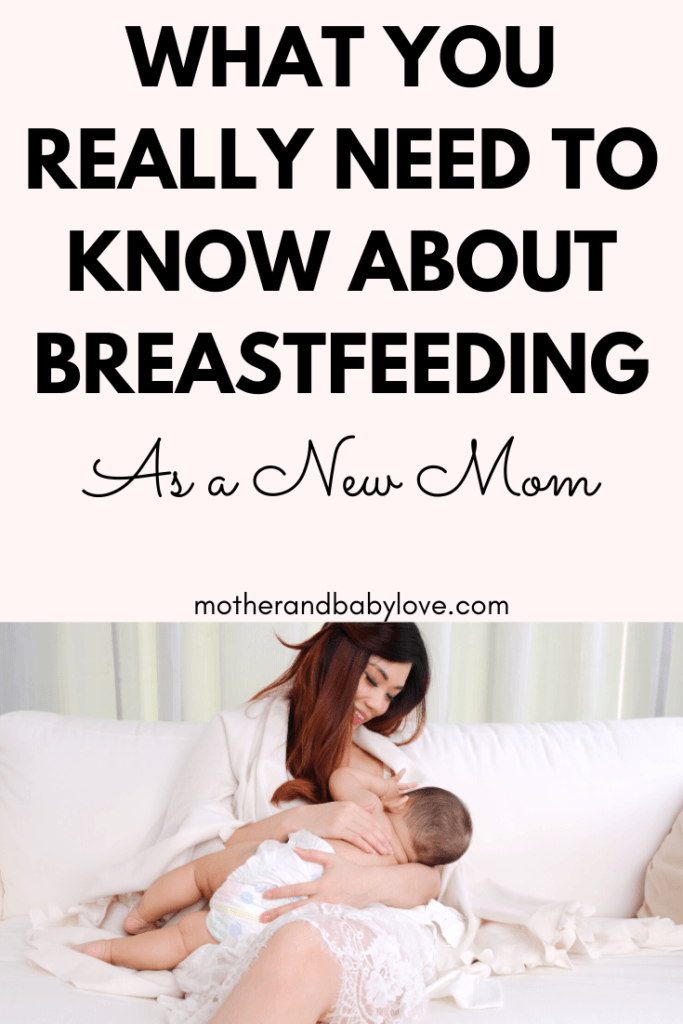
How do you know when to switch breasts when breastfeeding?
Some people will tell you to keep track of the amount of time the baby spends on each breast and shift after a certain amount of time. However, what I have found to work best is to drain one breast before you switch to the other one.
Wait until your baby stops suckling on the first breast and then offer the second breast. The best advice I ever received.
What breast do you start with when breastfeeding?
At each feeding, offer the breast that was last during the previous feeding. That way, you will ensure both breasts are being drained and as a result keep your supply well balanced.
Keep in mind that some babies (like my daughter) will only nurse on one side at a time. Always start with the breast that was not drained in the last feeding.
You can use an app to track which breast you started with the last time. Another easy trick is to tuck a nursing pad on the side that is not well-drained as a reminder. You can also use this bracelet reminder.
How do I know that my breast is empty?
As a breastfeeding mother, your breasts are never truly empty because milk production is continuously happening. You will know that your baby is done when they let go of your nipple.
If the baby doesn’t let go of your nipple you will know that they are done when the suckling stops or slows down almost completely. Most of the time this is an indicator that they have emptied the breast. When the breast is ’emptied’ it does not feel full anymore, it will have a soft and floppy feeling.
How Often Should You Feed?
In the first 6 weeks, you’ll need to nurse for 8 to 12 times in a day(24 hours) which is basically every 2 to 3 hours. Make sure to follow your baby’s cues and feed on demand. As the baby is growing, the length of time between feeds will also increase.
How do I know if baby is getting enough milk?
There are three main indicators on whether the baby is getting enough milk.
- Weight – as long as the baby is gaining weight as expected, they are getting enough milk.
- Wet Diapers – 5 to 6 wet diapers every 24 hours are expected until the baby is 6 weeks after which the number can reduce.
- Dirty diapers – it is expected that the baby will have 3 to 4 or more stools daily. Some babies will poop after every nursing session and that’s normal. The stool frequency sometimes reduces significantly after around 6 weeks.
As long as your baby is hitting the indicators according to their age, they are most likely getting enough milk.
How do I know if I have sufficient milk supply?
As long as your baby is gaining weight and hitting all the indicators above while being exclusively breastfed, then your milk supply is okay.
Tips for Successful Breastfeeding
Here are some tips that I think you should consider it you want to breastfeed successfully
- Start immediately after baby is born. Babies are most eager to suck during the first 2 hours after they are born. I put my little girl to breast as soon as she was born and she started suckling right away. If you are not able to, don’t worry, there’s plenty of time to practice.
- Get support – I cannot stress enough the need for you to have a lactation counselor to walk with you. You can find other online resources that are reliable here.
- Have a hydrating drink within reach when you are breastfeeding. Breastfeeding makes you thirsty, sip on water, milk, or juice. You can add a snack too if you are hungry
- Find a quiet, peaceful place to breastfeed. Before you get used to breastfeeding, avoid distractions like phones so that you pay attention to your baby’s cues. Once you get the hang of it you can use your hands whichever way you want with no problems.
- Comfort is key. Find a comfortable chair with your legs propped up so that you don’t get tired. Use a breastfeeding pillow to support the baby or nurse while side-lying when you are tired. Try different positions until you find one that works best for you If you are sitting on a couch, use a breastfeeding stool to prop your legs. It helps, trust me.
- Feed baby on demand – Follow your baby’s cues and feed them when they are hungry. In the beginning, before you learn baby’s hunger cues you can start by feeding them frequently (2 to 3 hours) between feeding. This will also help you to avoid engorgement. After some time baby kinda naturally falls into their own schedule and you learn the optimum amount of time between feeds to avoid having a cranky baby.
Common Breastfeeding Terms That You Should Know About

Let-Down
Let down is a reflex that occurs when your baby’s sucking sends signals for breast milk to be released. It can be experienced as a tingling sensation or as a full or warm feeling. It is more intense in the early months of breastfeeding.
Stress, anxiety, sickness , fatigue, distractions and large amounts of alcohol can inhibit the let-down reflex. Being relaxed before putting baby to breast can be helpful for stimulating the flow.
Cluster feeding
Cluster feeding is when a baby is feeding more frequently than is normal for them. Say the baby has been feeding every 2 to 3 hours and then they start demanding to be fed every hour, that is called cluster feeding.
Most of the time it happens as a result of a growth spurt and the baby is instinctively feeding to meet their increased demand and as a result the milk production also increases to catch up with the demand. Cluster feeding usually lasts for 1 or 2 days after which your supply will catch up with the baby’s demand and you can go back to some consistency.
Growth spurts are most common at 3 weeks, 6 weeks, 3 months and 6 months.
Relactation
Relactation is when a mom is resuming breastfeeding after there has been a gap. A mom may have stopped breastfeeding because of medical reasons, separation from the child, or maybe they want to start breastfeeding an adopted child. Relactation takes a lot of determination and hard work but it is possible. If you are considering relactation, this group by La Leche League may provide you with the support you need.
Tandem nursing
Tandem nursing is when two or more children of different ages are breastfed at the same time. They can either breastfeed on each breast simultaneously or take turns breastfeeding.
It is a way for moms who breastfeed throughout pregnancy to meet the needs of the older child who has not been weaned off of breastfeeding as well as the newborn.
The Last Thing You Need To Know About Breastfeeding
Breastfeeding can be challenging but it is also very rewarding. With the right information in your hands, you can definitely succeed in your breastfeeding journey. Both the WHO and UNICEF recommend that you should breastfeed for 2 years or more. I know you got this, mama.
It’s your turn now, what are your best tips for making breastfeeding work? Did I miss any key point? Let me know in the comments and I will be happy to include them in the post.
Remember to pin this!
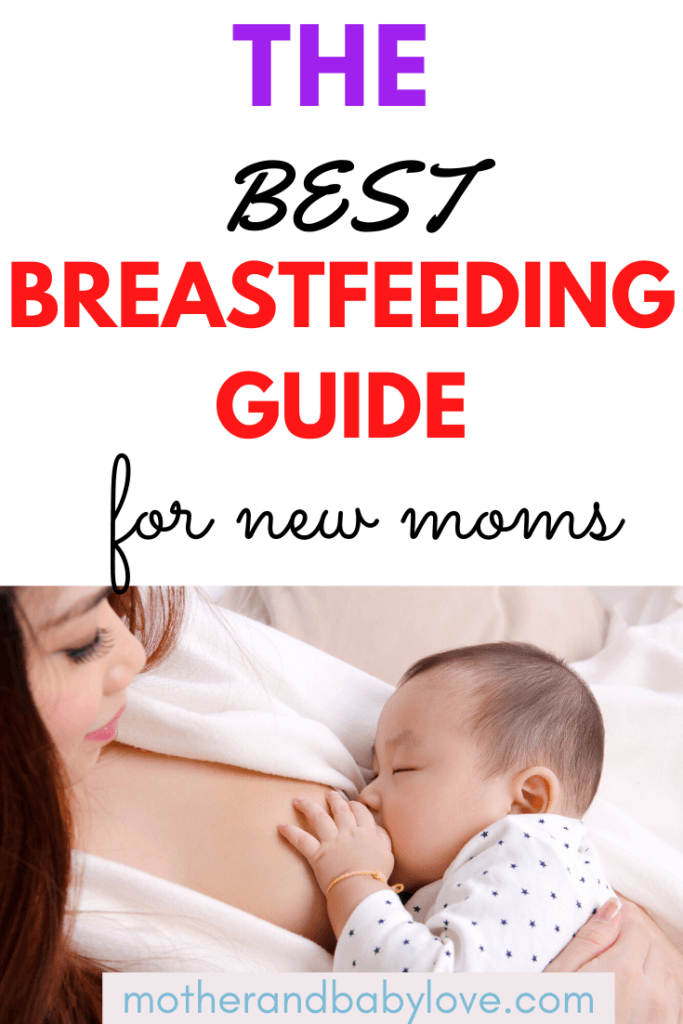
Read Next:





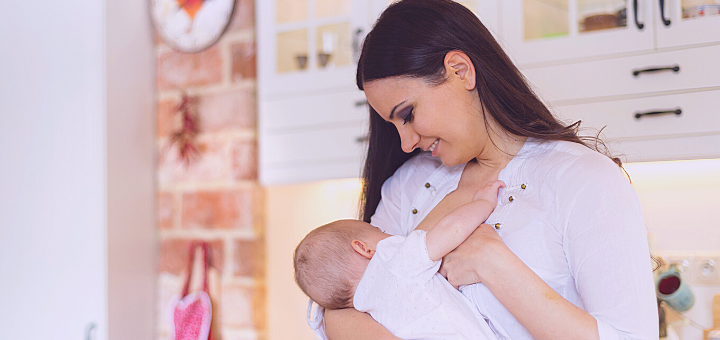
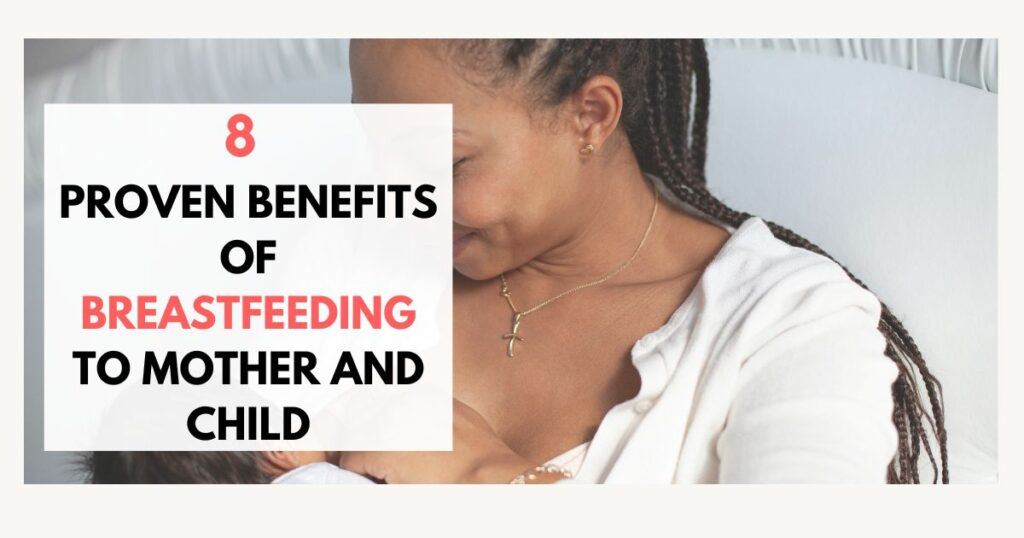
This is the most detailed post I’ve read about breastfeeding, and I’ve read many because I havent been able to produce enough milk. I actually blogged about my struggle. If interested you can read it and we can talk about it.
I will share your post because your content is amazing.
Thanks, Daynia. I read your post about underproducing and totally agree with you that fed is best. Thanks again for your comment and for sharing.
Wow this is an amazing post about breastfeeding! You could probably turn it into an ebook! Its fantastic ?
That’s actually a great idea. Thanks, Rachel.
Wow, you have written a book here? This is the most informative post I have ever seen . I am passing this information to my step daughter. She is a new mom and had concerns about breastfeeding.
I am sure all of her stress about the subject can be alleviated with the help of this awesome post!!
Great job and Thank you,
Greg
Thanks, Greg. My goal with this post was to really provide as much useful information to new moms as possible. I really hope it helps your stepdaughter with her breastfeeding journey
Oh wow what a fantastic resource on breastfeeding! I just wish I had come across this 8+ years ago when my first baby was born. I struggled so much and I felt like such a failure because of it.
I thought I was not producing enough breast milk when in fact my daughter was just going through a normal phase of a growth spurt. I kick myself now for topping her feeds off with formula because I was so worried she was not getting enough.
Thankfully with my second baby I knew better after making mistakes with my first. I won’t say it was easy breastfeeding my second but I was successful in breastfeeding him until 13 months which was a huge achievement!
Hey, Lynne. I am glad at least it was easier breast feeding your second. First times are always harder but don’t beat yourself up for supplementing. You did what you knew best given the circumstances. And hey, I love breastfeeding but ultimately, fed is best.
Hey, Lynne. I am glad at least it was easier breastfeeding your second. First times are always harder but don’t beat yourself up for supplementing. You did what you knew best given the circumstances. And hey, I love breastfeeding but ultimately, fed is best.
I love it! I also blog about breastfeeding, pregnancy, and parenting. I love your blog! And this post is amazingly detailed!
Thank you, Talissa.
Thank you for this post! I know this is a struggle for a lot of new moms!
Pingback: How Much Protein Do You Need During Pregnancy? - Mother and Baby Love